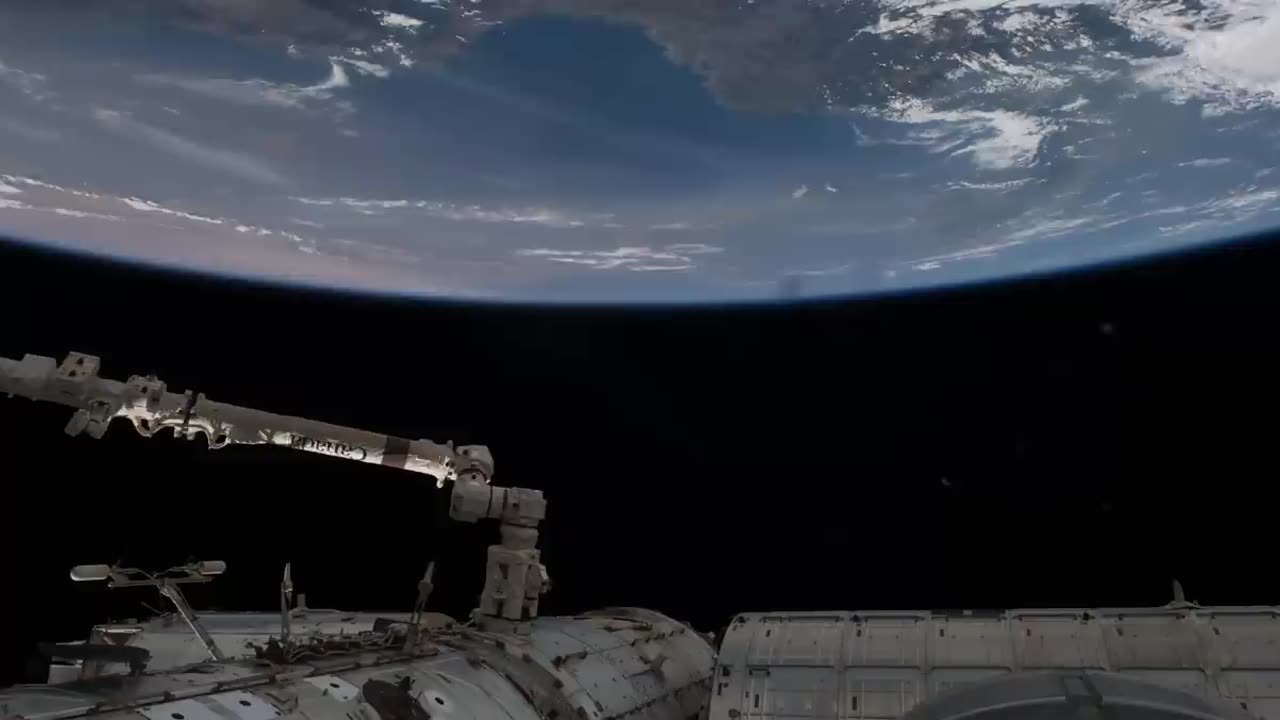Premium Only Content

Earth from Space in 4K – Expedition 65 Edition.
From space, Earth is a stunning and captivating sight. It appears as a vibrant blue and white sphere suspended in the vast darkness of space. Here's a detailed description of how Earth looks from space:
Blue Planet: The predominant color of Earth when viewed from space is a rich, deep blue. This is due to the abundance of water covering approximately 71% of the planet's surface. The blue color is a result of sunlight reflecting off the oceans and being absorbed by the water molecules.
White Clouds: Scattered across the surface are brilliant, fluffy white clouds. These clouds vary in size and shape, forming intricate patterns that trace the movement of atmospheric currents. They create a dynamic and ever-changing texture against the backdrop of the blue oceans.
Green and Brown Landmasses: Amidst the vast oceans, landmasses emerge as distinct shapes. These continents and islands appear in various shades of green and brown, representing the diversity of vegetation and terrain on Earth. Forests, grasslands, deserts, and mountains are visible, offering a glimpse of the planet's geological and ecological variety.
Glittering City Lights: As the sun sets on one side of the planet, artificial lights start to dot the darkened landscapes. The glow of city lights reveals the presence of human civilization, forming intricate patterns that outline coastlines and follow major transportation routes.
Thin Atmosphere: Earth's atmosphere, while invisible from space, creates a thin layer that hugs the planet's surface. This atmospheric layer is what makes Earth unique among celestial bodies, providing the oxygen and conditions necessary to support life. When sunlight passes through the atmosphere, it scatters, creating a beautiful halo of colors around the planet known as the "atmospheric halo" or the "airglow."
Polar Ice Caps: The polar regions of Earth appear as vast expanses of white, indicating the presence of ice and snow. These ice caps can be seen at both the North and South Poles and serve as a reminder of the planet's climate dynamics.
Curvature of the Horizon: From space, you can clearly observe the curvature of Earth. This curvature adds to the sense of awe, reminding viewers of the planet's spherical shape and their perspective as distant observers.
Layered Atmosphere: During sunrise or sunset, the atmosphere often displays a range of colors, from deep oranges and reds to shades of pink and purple. This phenomenon, known as the "Terrestrial Limb," occurs due to the scattering of sunlight by the atmosphere's gases and particles.
Delicate Beauty: The fragile appearance of Earth from space evokes a sense of care and responsibility for our planet. It reminds us of the interconnectedness of all life and the need to preserve and protect the unique environment that supports us.
Viewing Earth from space is an experience that has deeply impacted astronauts and individuals fortunate enough to witness it. It instills a sense of wonder, unity, and an understanding of the delicate balance that sustains life on our beautiful planet.
-
 LIVE
LIVE
Sacred Sage
4 hours agoDaz3D: Attempting to Finish Zoe Conversation!
83 watching -
![[Stream #19 ] Gaming, Chatting, you know the drill!](https://1a-1791.com/video/s8/1/9/o/E/e/9oEeu.0kob-small-Stream-Sour-Pickle-100-Foll.jpg) LIVE
LIVE
OneRandomDolly
2 hours ago[Stream #19 ] Gaming, Chatting, you know the drill!
336 watching -
 11:07
11:07
TimcastIRL
1 day agoElon Musk Suggests He’ll BUY MSNBC, Joe Rogan Will REPLACE Rachel Maddow
31K43 -
 34:24
34:24
The Rubin Report
19 hours agoFormer CEO: The Aftermath of Vice Media & What's Next for Mainstream Media | Shane Smith
39.3K11 -
 LIVE
LIVE
tacetmort3m
1 day ago🔴 LIVE - BECOMING THE UNTOUCHABLE (RADIATION WHO?) - STALKER 2 - PART 3
326 watching -
 16:05
16:05
China Uncensored
15 hours agoAnother Car-Ramming Strikes Outside a Chinese School!
4.62K11 -
 9:26
9:26
Dr. Nick Zyrowski
6 hours agoAnti Inflammatory Foods | You MUST Eat These!
2.75K1 -
 15:40
15:40
Bearing
2 hours agoEnd Stage Trump Derangement | Rosie O'Donnell is NOT Doing Well 😬
1.74K36 -
 35:19
35:19
hickok45
5 hours agoSunday Shoot-a-Round # 256
6.08K18 -
 41:20
41:20
PMG
17 hours ago $0.39 earned"The No B.S. Guide to Getting Your Life together in 2024!"
4.14K